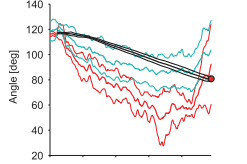Farshchian, A., Gallego, J. A., Cohen, J. P., Bengio, Y., Miller, L. E., & Solla, S. A. (2018). Adversarial domain adaptation for stable brain-machine interfaces. arXiv preprint arXiv:1810.00045. Brain-Machine Interfaces (BMIs) have recently emerged as a clinically viable option to restore voluntary movements after paralysis. These devices are based on the ability to extract information about … Read More “JournalClub: Adversarial Domain Adaptation For Stable Brain-Machine Interfaces” »
Author: stephan
J. J. Bird, J. Kobylarz, D. R. Faria, A. Ekárt and E. P. Ribeiro, “Cross-Domain MLP and CNN Transfer Learning for Biological Signal Processing: EEG and EMG,” in IEEE Access, vol. 8, pp. 54789-54801, 2020, doi: 10.1109/ACCESS.2020.2979074. Abstract: In this work, we show the success of unsupervised transfer learning between Electroencephalographic (brainwave) classification and Electromyographic (muscular … Read More “JournalClub: Cross-Domain MLP and CNN Transfer Learning for Biological Signal Processing: EEG and EMG” »
E. Rahimian, S. Zabihi, A. Asif, D. Farina, S. F. Atashzar and A. Mohammadi, “FS-HGR: Few-Shot Learning for Hand Gesture Recognition via Electromyography,” in IEEE Transactions on Neural Systems and Rehabilitation Engineering, vol. 29, pp. 1004-1015, 2021, doi: 10.1109/TNSRE.2021.3077413. Abstract: This work is motivated by the recent advances in Deep Neural Networks (DNNs) and their widespread … Read More “JournalClub: FS-HGR: Few-Shot Learning for Hand Gesture Recognition via Electromyography” »
Presented on 09.09.2020 by Stephan Lehmler
Objective. Brain–machine interface (BMI) technologies have succeeded in controlling robotic exoskeletons, enabling some paralyzed people to control their own arms and hands. We have developed an exoskeleton asynchronously controlled by EEG signals. In this study, to enable real-time control of the exoskeleton for paresis, we developed a hybrid system with EEG and EMG signals, and … Read More “JournalClub: A hybrid BMI-based exoskeleton for paresis: EMG control for assisting arm movements” »

